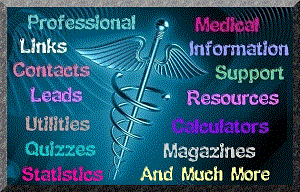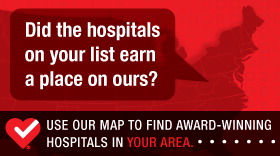Neuroplasticity
Source: Stroke-Rehab.com
You can ask many different experts, and neuroplasticity will be explained in many different ways. The purpose of this website is not to get into technical jargon that overwhelms the stroke patient but rather to educate persons about stroke rehabilitation in simple laymen terms. In stroke recovery, neuroplasticity basically refers to theability of the brain to rewire or reorganize itself after injury.
Various studies over the past decade have shown that the adult brain can "rewire" itself when damaged. Studies have also shown that the adult brain can create new neurons, a phenomenon called neurogenesis. These new neurons require support from neighboring cells, blood supply, and connection with other neurons to survive.
Certain requirements must be met during rehabilitation for neurogenesis and plasticity to actually change the brain. Rehabilitation involving neuroplasticity principles requires repetition of task and task specific practice to be effective.
What this means for the stroke patient is that going to see your therapist for a one hour visit (or even a 3 hour visit) is not enough to lead to neuroplastic changes in the brain. Patients need to think of physical, occupational, and speech therapy as an adjunct to stroke recovery.
It's up to the patient to make the most of recovery by continuously using the injured parts of the body and mind outside of therapy sessions in everyday life.
A good comparison would be how one learns multiplication. A teacher doesn't just show a multiplication table a couple of times to her students for the concept to be mastered. Instead, students have to practice over and over to learn and master multiplication.
A child doesn't learn how to walk overnight. It requires much practice. A baseball player doesn't become elite just by playing a few games of baseball.
You must take control of your stroke recovery process and be willing to invest a lot of time and energy if you want to see change especially with moderate to severe stroke.
It's also important to keep using a skill once you have mastered it - use it or lose it as you often hear in rehab.
Please note that plasticity doesn't mean that one can practice every task over and over and accomplish them all. Stroke is much more complicated than that.
Different parts of the brain control different body functions and the brain adapts better to some areas of damage more than others. Scientists have identified certain areas of the brain that yield neurogenesis but have not identified it in all areas of the brain.
If you want to learn more about your specific stroke, ask your neurologist specifically what areas of your brain were affected. The neurologist will also be able to tell you what problems you can expect because of that damage (e.g. speech deficits, vision deficits, dizziness, difficulties with balance, etc.)
You can further improve your rehabilitation by specifically targeting the weaknesses caused by your stroke.
In my opinion, neuroplasticity doesn't necessarily change exercise and therapeutic activities done in stroke rehabilitation but rather emphasizes that more repetition and task specific practice is needed. Probably the most commonly used therapy that is based on neuroplasticity is constraint induced therapy.
Constraint induced therapy involves limiting the movement of the non-affected or stronger arm and instead using the affected or weaker arm more frequently and intensely. There has been some positive research results with constraint induced therapy, however, it requires much effort and patience from the stroke patient.
Some other treatments that may help with brain reorganization include interactive metronome, brain retraining software and websites, mirror box therapy, and robotic and gait devices that assist with movement repetition.
Research is still needed in the area of brain plasticity and stroke rehabilitation. Scientists have demonstrated that brain reorganization can occur, but only limited rehab treatments have been developed that address neuroplasticity.
The stroke patient, however, armed with the knowledge that brain rewiring occurs with repetition, can improve their rehabilitation outcomes by application of this concept in their daily lives. Remember, therapy is an adjunct to recovery.
You cannot go to therapy sessions and expect positive outcomes without applying what you have learned on a consistent daily basis.
Stem Cell Therapy is safe for Stroke patients; study shows
Source: ScienceDaily.com
Materials furnished by: Medical College of Georgia at Augusta University
A multicenter trial looking at whether a single dose of millions of adult, bone-marrow-derived stem cells can aid stroke recovery indicates it's safe and well-tolerated by patients but may not significantly improve their recovery within the first three months, researchers report.
However, the trial does provide evidence that giving the therapy early -- within the first 36 hours after stroke symptoms surface -- may enhance physical recovery by reducing destructive inflammation as well as the risk for serious infections and that these benefits might continue to surface many months down the road, they report in the journal Lancet Neurology.
Stroke is a leading cause of long-term disability and the leading preventable cause of disability, according to the American Heart Association.
"There is solid evidence from our basic science work and now some indicators from this phase 2 patient trial that giving these stem cells can safely help dial back the body's immune response to stroke injury that can ultimately further damage the brain and body," said Dr. David C. Hess, stroke specialist and chairman of the Department of Neurology at the Medical College of Georgia at Augusta University.
Hess, corresponding author of the study, said next-phase trials already are being planned that make time-appropriate adjustments.
The study at 33 centers in the United States and the United Kingdom from October 2011 to December 2015 included 129 adults with moderately severe strokes.
A dose of 400 million cells were given to a handful of patients to establish safety, the dose was then increased to 1,200 million cells for the majority of patients. About half of patients received a single dose of the stem cells while the remainder received placebo.
Patients in both arms were able to also have received standard stroke therapies, including the clot-buster tPA and/or an endovascular procedure to retrieve the clot.
While the study made several adjustments along the way to enable better enrollment, it was an early adjustment in the timeframe for giving the therapy that may have impacted results, Hess said.
Trial leaders extended the timeframe for therapy from the original 24 to 36 hours -- which was suggested by previous animal studies -- to 24 to 48 hours.
That adjustment was in response to limited hours at some centers to thaw and otherwise prepare the cells for patients as they qualified for the study.
Now cell developers have reduced thaw times from 6 hours to 30 minutes and made the process much easier, which should enable tighter timeframes for giving the treatment moving forward, Hess said.
Although the primary analysis of results was done at 90 days, about 80 percent of study participants were followed for a full year.
It was those longer-term results, particularly in the small number of patients who got therapy early, that suggested the cell therapy group might be more likely to continue to recover, with reduced disability and fewer infections one year out than the placebo group, investigators write.
The multipotent cells, dubbed MultiStem, were developed by the international biotechnology company Athersys Inc., which also funded the clinical trial.
Doses given in the study were the largest ever given in a human cell therapy trial. Side effects in a minority of patients included bad breath, fever, chills, nausea and vomiting.
Death and other serious adverse events were no different in the treated versus untreated patients.
The fact that the cells are scalable and require no tissue typing make it a potentially widely and rapidly available therapy for stroke patients, Hess said.
"The cells are 'off the shelf' and ready to go," he said. "One donor of these cells provides hundreds of thousands of doses to patients."
Researchers like Hess, who have studied the cells, believe they primarily work by modulating the body's immune response, which can go a bit haywire following a stroke.
An immune response is definitely needed to help the brain heal and to remove debris generated by dead or damaged tissue.
But there also may be a secondary response that includes immune organs like the spleen, beginning to shrink in size within the first hours after symptoms of stroke arise, Hess said.
The spleen, an organ typically about four inches long and found just to the left of the stomach, is an important immune system regulator that filters blood and stores immune cells.
Shrinkage that follows a stroke prompts it to quickly dump activated immune cells that can go to the brain and worsen inflammation and damage there, Hess said.
Ironically, patients can then experience what is termed a more generalized "immune exhaustion" that puts them at increased risk of infections, like pneumonia and urinary tract infections.
"Some inflammation is good, but in a big stroke, it almost always overshoots," Hess said of this second neuroinflammatory response.
"We think this secondary neuroinflammatory process is preventing the natural healing tendencies of the body."
The researchers found patients receiving cell therapy had lower blood levels of inflammatory signals called cytokines as well as other drivers of the immune response such as circulating lymphocytes and a subset of lymphocytes called regulatory T cells.
"We think cell therapy prevents this early egress of cells from the spleen that go to the brain and, by doing that, they also prevent the later exhaustion of the spleen and immune system," Hess said.
Researchers note that they are not certain that the blood levels they measured correlate with tissue levels and they did not measure the spleen size of study participants.
However, they plan to look more closely at both in future studies and already have animal evidence the cell therapy reduces spleen shrinkage.
In an accompanying commentary, Dr. Steven C. Cramer, from the Departments of Neurology, Anatomy and Neurobiology and Physical Medicine and Rehabilitation at the Sue and Bill Gross Stem Cell Research Center at the University of California, Irvine, reiterates the need for new stroke therapies that can improve outcomes for a large percentage of stroke patients and views cell-based therapies as "attractive candidates.
" Cramer also notes that therapies like stem cells take time to produce clinical results and that expanding the timeline for delivery of therapy to enable study enrollment took these cell therapy researchers past the timeframe that proved effective in animal studies.
Early animal studies, led by former MCG neuroscientist Dr. Cesario V. Borlongan, pediatric neurologist and professor emeritus Dr. James Carroll and Hess, indicated that the cells would be most beneficial if given within two days of an ischemic stroke and they could reduce death of cells in the vicinity of the stroke's core, that were also injured.
Phase three studies -- which are among the final steps in seeking Food and Drug Administration approval -- are planned in the United States, the United Kingdom as well as Europe and these studies will limit the therapy window to 18-36 hours, Hess said.
Studies also are planned in Japan, where there is also an aging population and a keen interest in regeneration and cell therapy -- that includes Nobel Prize-winner Shinya Yamanaka who transformed mature cells into induced pluripotent stem cells that can basically become any cell type.
The upper age limit of the phase 2 cell therapy study also was extended from 79 to 83 during the trial and to patients who received both the clot-buster tPA and endovascular treatment to remove the clot, instead of one or the other, because of the large number of centers also performing the clot-removal technique to restore blood flow and ideally reduce stroke damage.
It's likely the cell therapy would also be an adjunct to one or both of those therapies if it becomes approved for general use.
What Is New In Stroke Research?
Source: BioMedCentral.com
An update from the 1st European Stroke Organisation Conference.
Alice Ridgway 29 April 2015
A
stroke is often described as the brain equivalent of a heart attack; blood supply to part of the brain is cut off, leading to cell death and potentially life-threatening brain injury.
The two main types of stroke are ischemic, where an artery to the brain is blocked, and hemorrhagic, when a blood vessel ruptures.
Every two seconds someone has a stroke, and
one in six people will suffer a stroke in their lifetime. Stroke is the third leading cause of death worldwide, with over 6 million people dying from strokes each year.
With an aging global population, the incidence of stroke is set to rise. These sobering statistics demonstrate its huge global impact, and emphasize how essential it is that we continue to further our understanding of stroke, with the aim of better prevention, treatment and management.
Earlier this month I attended the
European Stroke Organisation Conference, held in Glasgow. Involving over 2,000 scientists, researchers, clinicians, healthcare professionals, and patients, this was the first annual meeting held by the
European Stroke Organisation (ESO) covering exciting new research into stroke prevention, treatment, management and recovery.
An array of topics were covered over three days of fascinating talks and sessions, including updates on European clinical trials, rehabilitation and recovery, advances in imaging, experimental and translational medicine, and language and cognition in acute stroke.
The role of immunity, and combating free radicals
One particularly interesting aspect of the meeting was an update on developments in experimental and translational stroke medicine.
Dr Costantino Iadecola, Director of the Brain and Mind Research Institute at Weill Cornell Medical College, introduced ‘Stroke research at a crossroad: Where are we headed?’, providing us with an overview of some problems we face in research, and what we now need to do.
Dr Iadecola described some systemic responses to stroke, such as the key role of immunity and the infiltration of blood-borne cells into the post-ischemic brain.
With its protective-, destructive- and repair-promoting role, the immune response can be thought of as a ‘double-edged sword’; both making things worse and better in terms of the outcomes of ischemia.
Dr Iadecola also discussed the issue of post-stroke dementia; one third of patients have persistent cognitive decline post-stroke, and we know very little of the mechanisms involved.
Questions still remain such as ‘What does stroke do to the progression of pre-existing dementia?’. He concluded by arguing the importance of obtaining more data on these areas to support our ideas and move away from speculation, and that we still have a lot of work to do.
Dr Ángel Chamorro from the University of Barcelona continued with a presentation on ‘A radical approach to counteract free radicals in acute stroke therapy’. Free radicals, or reactive oxygen species, are produced following ischemic stroke, causing cellular damage.
To date, over 1,000 neuroprotective drug candidates have failed to show promise in reducing this damage in stroke, but Dr Chamorro argued that we should keep going; neuroprotection and counteracting the damaging effects of oxygen is an important avenue of research.
He discussed new findings demonstrating that
uric acid could improve glucose-driven oxidative stress in human ischemic stroke, and concluded by saying that for him, uric acid is a very appealing new drug candidate in stroke.
The long term effects and improving rehabilitation
Depression, cognitive impairment, impaired motor function and balance, and visual and communication problems have all been reported as long-term outcomes of stroke.
Around one third of people who survive are left with a permanent disability. Another interesting aspect of the meeting was an update on some of the research taking place into rehabilitation and recovery, and what we could do to improve the lives of those who have had a stroke.
Post-stroke depression
Suicide is a rare but serious outcome of stroke, yet post-stroke depression and suicide is a relatively under-studied topic.
Dr Marie Eriksson and colleagues presented a
socioeconomic and nationwide perspective on this from Sweden, giving us an overview of data analysed from
Riksstroke, the Swedish Stroke Register.
Looking at over 220,000 stroke patients, Eriksson and colleagues found that suicide was more common in men than women, and saw that there was a 5-fold inreased risk of suicide in patients under 55 years of age with post-stroke depression, in comparison to the general population of Sweden.
Socioeconomic position was also associated with an increased risk of suicide, for example having a lower income, or living alone. Dr Eriksson concluded by emphasising the importance of noticing these risks and considering suicide interventions in high risk groups, as part of post-stroke care.
Physical rehabilitation
There was also an array of presentations on the work being done to improve physical mobility after stroke, including a talk from
Dr Friedhelm Hummel on research aimed at understanding the brain networks involved in motor function recovery in the hand.
Meanwhile, Dr Lucy Jones from the University of Strathclyde presented on an early study looking at whether 3D visual feedback technologies could assist upper limb rehabilitation in patients, by allowing them and their therapists to assess their movement in real-time.
Another fast-developing area of research in rehabilitation is the use of robotics.
Dr Hermano Igo Kreps from MIT gave us a fascinating insight into the way that robotics are helping clinicians to be more effective and efficient in delivering patient care, and showed some exciting videos of the new robots under development to assist recovery of leg and ankle movement post-stroke.





